You can thin water-based polyurethane with water or denature alcohol, and oil-based polyurethane with turpentine, mineral spirits, or paint thinner.
To thin polyurethane, use a clean glass jar, measure and add the paint thinner, stir the mixture, and test the thinned polyurethane.
The best ratio to thin polyurethane is 4:1 (4 parts polyurethane to 1 part paint thinner) when spraying it.
What’s the Best Thinning Ratio for Polyurethane?
The best thinning ratio for spray polyurethane is 4:1 (4 parts polyurethane to 1 part paint thinner), and 3:1 (3 parts poly 1 part paint thinner) for brushing polyurethane.
You can also dilute the sealer with 20% paint thinner (1/5). Always use more polyurethane than thinning compounds in the mixture or you will over-thin the sealer.
Dilute polyurethane more if you want to spray it as the spray gun has a small nozzle and polyurethane must be thin enough so it can be expelled more easily. You will clog the spray gun nozzle if the coating is too thick.
Always add the thinning compound to the polyurethane, not the other way around. This way you can monitor the flow and consistency of the sealer to prevent over-thinning. You risk thinning it too much or too little if you add polyurethane to the paint thinner.
If you over-thin polyurethane, the following things will happen:
- It becomes too light to apply.
- The color will be affected if the sealer is tinted.
- It will run and drip, especially on vertical surfaces, such as walls, leading to a messy work area.
- It will not stick properly to the surface.
- The finish will become blurry.
- It will not be as water-resistant as it should be.
- It will not be durable and will come off within the first six months after application.
How To Thin Polyurethane?
To thin polyurethane, do the following things.
- Use a Clean Glass Jar.
- Measure and Add the Paint Thinner.
- Stir the Mixture.
- Test the Thinned Polyurethane.
The tools you need for this project are listed below.
- A glass jar
- Polyurethane
- Paint thinner (water or mineral spirits)
- Paint mixer or clean turning stick
- A paintbrush
- A pair of large scissors
- Clean rags
1. Use a Clean Glass Jar
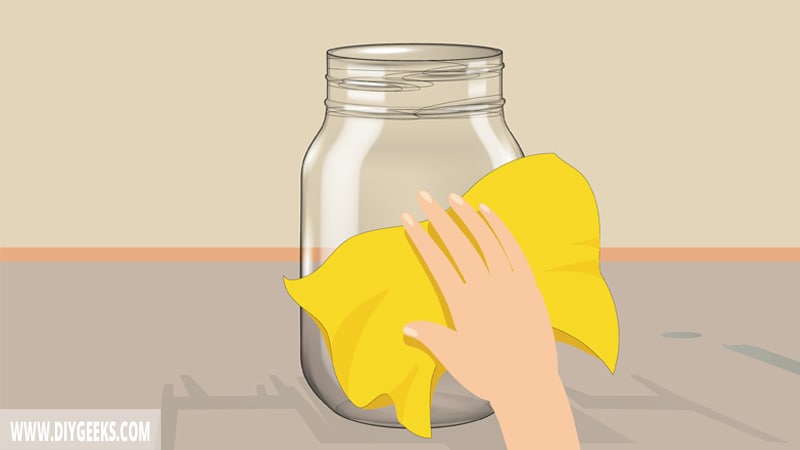
Pour polyurethane into a clean glass jar so you can see the sealer’s clarity while thinning it. If the polyurethane is in a container, open the can and pour it into the clean glass jar.
If the polyurethane comes in spray cans, make a dent into the can using a nail or screwdriver, use a pair of scissors to cut the sprayer can, and pour the polyurethane into the clean glass jar.
2. Measure and Add the Paint Thinner
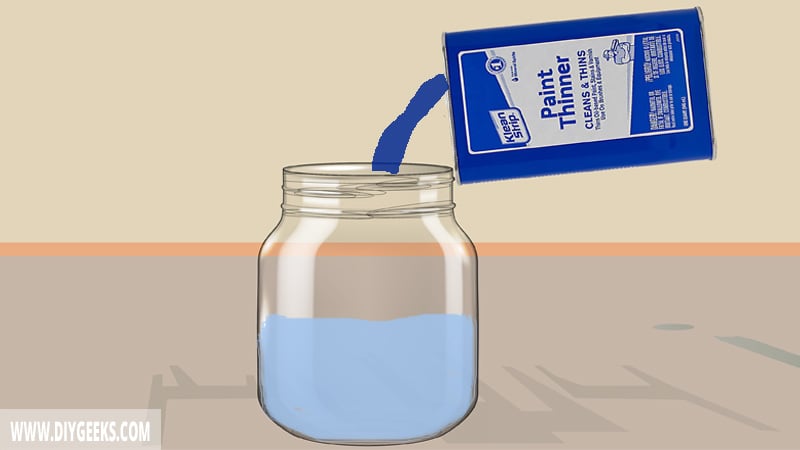
To dilute water-based polyurethane, use water. To dilute oil-based polyurethane, use mineral spirits or turpentine.
Add the paint thinner in a 4:1 ratio (1 part paint thinner and 4 parts polyurethane). You can also use a measuring cup; add 1/2 cup of paint thinner to 1 gallon of polyurethane.
Use can use more or less paint thinner based on the chosen application method. To spray the polyurethane, the sealer must be as thin as possible. To apply it with a paintbrush, you don’t have to dilute it as much.
3. Stir the Mixture
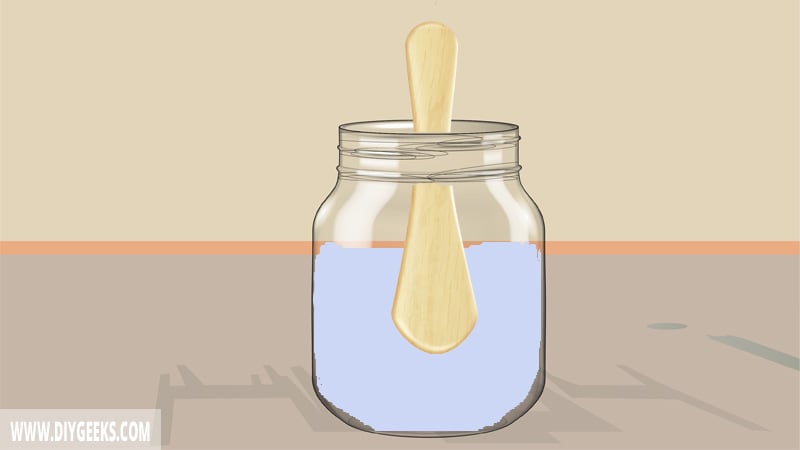
Stir (or mix) the polyurethane and paint thinner mixture for around 10 minutes with a turning stick or paint mixer.
Don’t stir too fast or too hard, as that can cause bubbles in the coating. Instead, stir in a figure 8 motion, like you are trying to write “8” inside the mixture with the turning stick.
Once the sealer has an even flow and there’s no separation in the paint particles inside the glass jar, stop stirring.
4. Test the Thinned Polyurethane
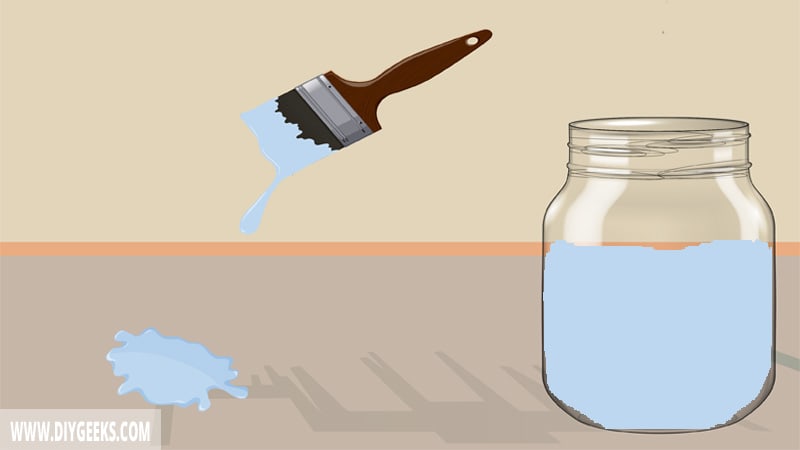
Test the thinned polyurethane into a cardboard or dispensable item. If the sealer is too thick, add more paint thinner to the mixture, and mix again. If the sealer is too thin, add more polyurethane to the mixture, and mix again.
Which Products Can You Use to Thin Polyurethane?
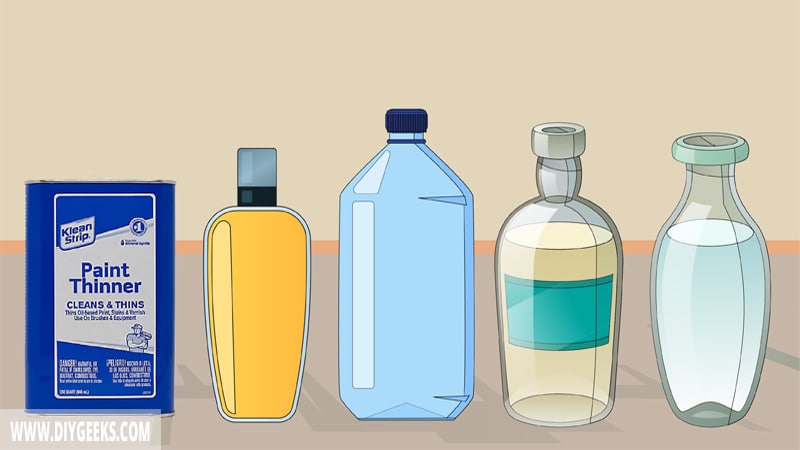
The products you can use to thin polyurethane are listed below.
1. Paint Thinner
You can use paint thinner to dilute polyurethane, but you must use the right paint thinner based on the sealer type.
For oil-based polyurethane, use oil-based paint thinner. For water-based polyurethane, use water-based thinner.
Water and oils don’t mix. So, if you use the wrong type of paint thinner, you’ll end up blurring the coating. This will make it difficult for the clear coat to remain clear even after drying.
2. Lacquer Thinner
You can use lacquer thinner to thin oil-based polyurethane only as it contains oily deposits and is used to thin lacquer, which is an oil-based sealer too.
You will ruin the flow and clarity of the finish if you thin water-based polyurethane with lacquer thinner.
3. Denatured Alcohol
You can use denatured alcohol to thin water-based polyurethane. But, you must carefully use it as you can over-thin the sealer easily.
Related Read: Can You Tint Polyurethane Paint?
FAQs
Does Thinned Polyurethane Dry Faster?
Thinned polyurethane does dry faster. Once its thickness has been diluted, it will have a lighter flow. Since there’s less sealer on the surface, the solvent will evaporate much faster, leading to a faster dry time.
Do You Need To Thin Polyurethane When Spraying?
You need to thin polyurethane when spraying as the sealer is too thick to fit into the sprayer’s nozzle.
Thinning polyurethane for spraying helps to achieve a super smooth finish. When the sealer is thinned, it becomes lighter and can be sprayed evenly with no problems.
You don’t need to thin polyurethane that comes in a spray can as they are already thinned.
When Should You Thin Polyurethane?
You should thin polyurethane if its coating is too thick or if you are using a sprayer. If the coating is too thick, it will take longer to dry, also a thick flow can clog a sprayer.


